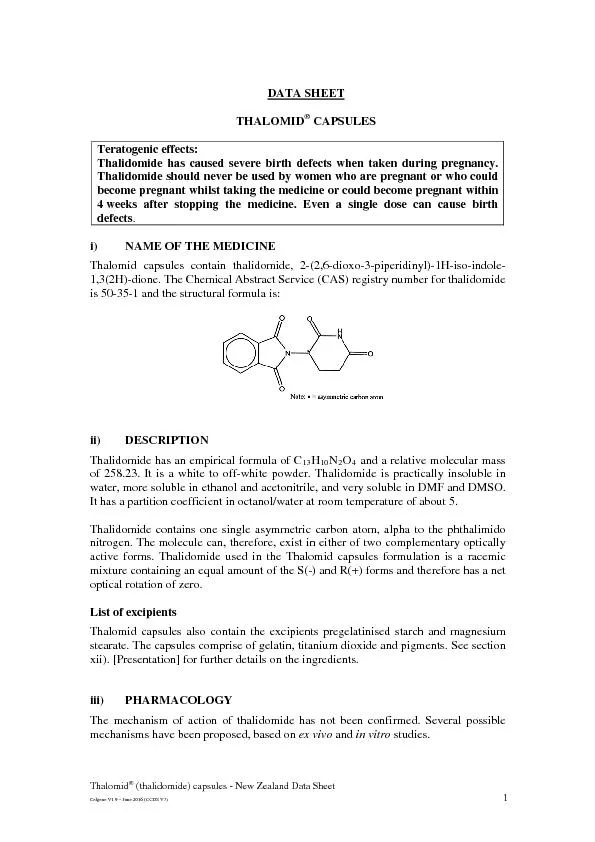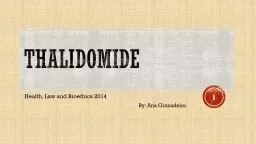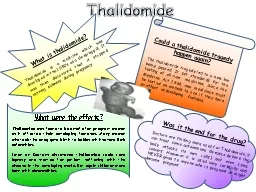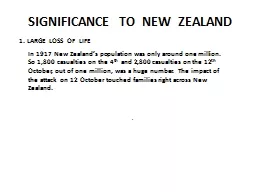PDF-Thalomid(thalidomide) capsulesNew Zealand Data SheetCelgene 1.9June(CC
Author : cheryl-pisano | Published Date : 2016-08-12
DATA SHEET THALOMID Teratogenic effects Thalidomide has caused severe birth defects when taken during pregnancy Thalidomide should never be used by women who are
Presentation Embed Code
Download Presentation
Download Presentation The PPT/PDF document "Thalomid(thalidomide) capsulesNew Zealan..." is the property of its rightful owner. Permission is granted to download and print the materials on this website for personal, non-commercial use only, and to display it on your personal computer provided you do not modify the materials and that you retain all copyright notices contained in the materials. By downloading content from our website, you accept the terms of this agreement.
Thalomid(thalidomide) capsulesNew Zealand Data SheetCelgene 1.9June(CC: Transcript
Download Rules Of Document
"Thalomid(thalidomide) capsulesNew Zealand Data SheetCelgene 1.9June(CC"The content belongs to its owner. You may download and print it for personal use, without modification, and keep all copyright notices. By downloading, you agree to these terms.
Related Documents














